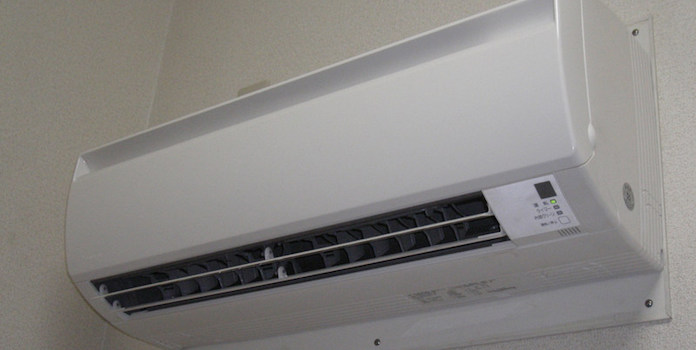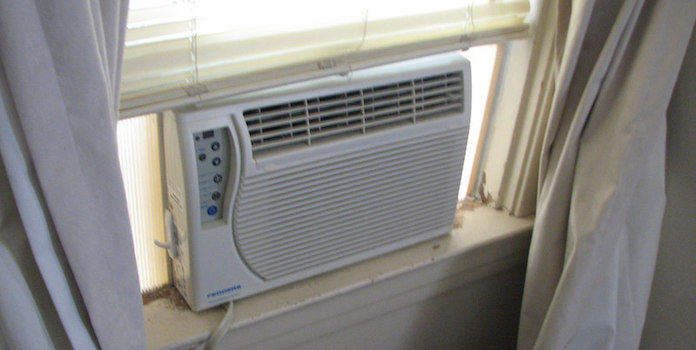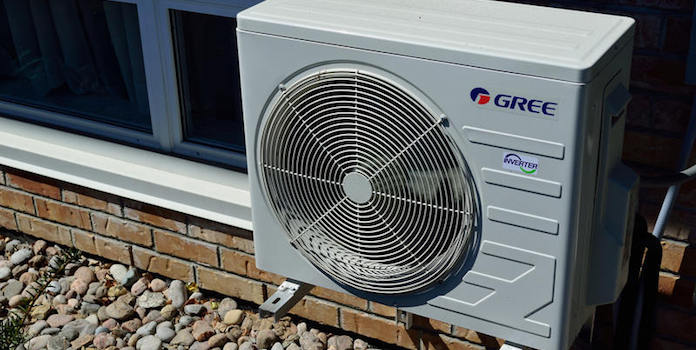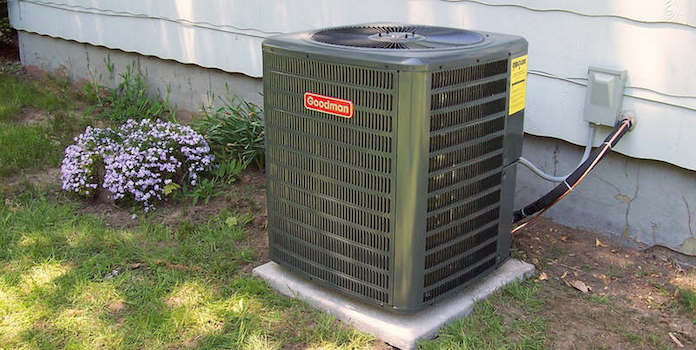Is it Possible for Solar Panels to Run Air Conditioner Units?

How to ensure your solar system can manage AC – the biggest energy hog in any house
Can you use solar panels to run air conditioner units? In a word, yes. If your home is connected to the grid and your solar installation is net metered, it is possible to use solar energy to cool your house. Many homes already do this!
However, in another word: maybe. An AC unit requires a lot of electricity. If you live off-grid and have no method of backup power, your solar/battery system will need to be quite large.
Let’s take a look at AC energy requirements and typical solar production to see if solar panels can really run air conditioners in each setup.
AC for grid-connected homes
The fact that we are all able to access almost unlimited amounts of electricity 24/7 is a beautiful part of our modern electricity grid. Need a light? Just switch it on. Wash your clothes at any time. You can even leave your AC on for the entire summer, no questions asked. You have to pay for all that electricity, of course, but it’s readily available.
Air conditioning is one of the biggest energy hogs in your home. The average AC unit uses about 2,000 kilowatt-hours each year. With the average home using 10,812 kWh each year in total, that’s about 20% of all annual electricity use!
Can a solar installation produce enough electricity to cover a home’s entire electricity needs, including AC? You bet!
We’ve mentioned before how solar installations produce different amounts of electricity depending on location, so let’s look at a few different spots to see just how big a solar system needs to be to produce 10,812 kWh of electricity each year. We used NREL’s PVWatts solar calculator to find this data.
- Las Vegas, NV: 6 kW installation
- San Diego, CA: 6.75 kW installation
- Raleigh, NC: 7.5 kW installation
- Seattle, WA: 10 kW installation
In Las Vegas and San Diego, you’d need a solar installation just a bit bigger than the national average of 5.6 kW (p.5). Installations in Raleigh, NC, need to be about 50% bigger, while cloudy Seattle needs almost 2x as much! Even still, a 10kW installation isn’t really that big and is a fairly common installation size.
Not everyone has AC in their home, so let’s look at a state that probably comes as close as you can get to 100% air conditioned: hot, sunny, desert-laden Arizona.
Arizona homes use about 12,336 kWh each year on average – 15% more than the national average we gave you above. With Arizona so hot and sunny, you pretty much need AC to live – but there’s a positive as well. With the intense sunlight, that means solar installations produce much more there than in other areas (just like Las Vegas above).
To produce 12,336 kWh with solar in Arizona, you’d need a 7kW installation. That’s not too bad to cover 100% of the average home’s electricity use, including AC!
AC for off-grid homes
If you’re wondering whether solar can power air conditioning as part of an off-grid home, the calculation is a little more complicated than what we did above.
With grid-connected solar installations, you can pull electricity from the grid when your solar installation isn’t producing electricity. If you’re off-grid, though, you don’t have that luxury. You need a bank of batteries to store electricity to use at night and on cloudy days.
We already mentioned that AC units use a lot of electricity, but let’s break that statement down a bit further.
All electrical devices require a certain number of watts to function. An LED lightbulb needs about 9 watts. A hair dryer needs 1,750 watts (equal to 1.75 kilowatts). If you leave that LED lightbulb on for 8 hours, it’ll use 72 watt-hours of electricity (9w X 8 hours). If you use your hair dryer for 2 hours each month, you’ll use 3.5 kWh of electricity.
If this is confusing, picture a river. The wattage is the width of the river – a measurement of how much water can flow at one time. The number of kilowatt-hours is how much water is flowing past.
Going back to our off-grid setup, your batteries need to be able to handle both your energy usage’s width of the river (wattage) as well as the amount of water (kilowatt-hours).
Let’s say you have a small, single-room cabin and you – conscientious of your electricity use – install a 1 ton, fairly-efficient mini split AC/heating system. The unit pulls 1.2 kW of electricity when cooling the cabin. If you left it on all the time, that would be 28.8 kWh each day. Of course, the AC unit cycles on and off as it keeps the inside temperature steady, so let’s say it’s on about half the time. That’s 14.4 kWh a day and 432 kWh each month.
You don’t have any electric grid to pull from, so your battery bank needs to be large enough to handle the unit’s 1.2 kW of electricity pull and deep enough to cover a few days of energy use without your solar panels charging it up (in case of lingering storms, rain, clouds, etc).
At this rate, your battery would need to provide about 45 kWh of electricity (14.5 kWh X 3 days) for the AC alone (obviously, you have lights, pumps, appliances, computers, and other energy-users as well to power up).
You also need to install enough solar panels to charge your batteries in a reasonable amount of time. A single solar panel is going to charge your batteries much too slowly – you’ll use up the stored electricity faster than the solar panel can charge them again.
To provide about 14.5 kWh of electricity each day in Arizona, you’d need a 3kW solar installation – or a system with about 12 solar panels. In Seattle, you’d need a 4.75 kW installation – about 18 panels.
This is certainly doable, but it’s on the large side when compared to other off-grid systems (though on the smaller side when compared to grid-connected homes), as the number and size of batteries to house this much electricity adds quite a bit of cost. Off-grid homeowners typically try to keep their solar systems as small as possible.
Using solar panels to run air conditioner units
AC units use a lot of electricity, but they’re really no match for a well-sized solar installation. If you’re connected to the grid and you’ve got the roof space, installing enough solar panels to cover your entire electricity usage – including AC – is a very doable task and one that many homeowners have done before.
If you’re interested in AC for an off-grid solar installation, you’ll need to make sure your battery bank and solar panels can comfortably handle all the electricity the AC unit (and your other gadgets) requires.
With the batteries, inverter, and solar panels, off-grid systems can get quite expensive, so try to lower energy use as much as possible – including limiting or even discarding AC if that’s an option. But, if you’ve got the space, money, and desire, your off-grid system can cover all your AC use as well!



